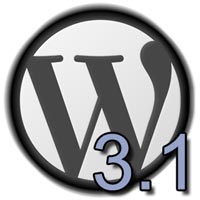WordPress 3.1
 Early on February 23rd, WordPress.org released WordPress 3.1 the latest update to their widely-used content management system and blogging software. This release was code-named “Django”, an homage to the late jazz guitarist Django Reinhardt. To learn more about the amazing jazz guitarist and his interesting history, you can start by reading the Django Reinhardt wikipedia page. This is a little more significant than that last few maintenance releases and adds some new features that can be of great benefit to casual and business bloggers alike.
Early on February 23rd, WordPress.org released WordPress 3.1 the latest update to their widely-used content management system and blogging software. This release was code-named “Django”, an homage to the late jazz guitarist Django Reinhardt. To learn more about the amazing jazz guitarist and his interesting history, you can start by reading the Django Reinhardt wikipedia page. This is a little more significant than that last few maintenance releases and adds some new features that can be of great benefit to casual and business bloggers alike.
WordPress 3.1 Features
Probably the most useful new feature for those who are consistently building their sites is the new Internal Linking system. There’s an internal link button which enables the writer to browse a list of existing posts and include it in the new one. Another great feature is post formatting with allows end-users to pre-made themes to setup posts. Here are few of the other significant additions and upgrades:
Admin Bar – contains various links to useful admin screens. By default, the admin bar is displayed when a user is logged in and visiting the site and is not displayed in admin screens for single blog installs. For multisite installs, the admin bar is displayed both when visiting the site and in the admin screens. Streamlined Writing Interface – new users of WordPress will find the write screen much less cluttered than before, as more of the options are hidden by default. You can click on Screen Options in the top right to bring them back. Network Admin – move Super Admin menus and related pages out of the regular admin and into a new Network Admin screen. List-type Admin Screens – sortable columns for list-type screens and better pagination. Exporter/Importer Overhaul – many under the hood changes including adding author information, better handling for taxonomies and terms, and proper support for navigation menus. Custom Content Type Improvements – allows developers to generate archive pages, and have better menu and capability controls. Read more in the article Post Types. Advanced Queries – allows developers to query multiple taxonomies and custom fields. Refreshed Blue Admin Color Scheme – puts the focus more squarely on your content.For the full rundown of all the changes in WordPress 3.1 visit the press release page on the WordPress site.
 Early on February 23rd, WordPress.org released WordPress 3.1 the latest update to their widely-used content management system and blogging software. This release was code-named “Django”, an homage to the late jazz guitarist Django Reinhardt. To learn more about the amazing jazz guitarist and his interesting history, you can start by reading the Django Reinhardt wikipedia page. This is a little more significant than that last few maintenance releases and adds some new features that can be of great benefit to casual and business bloggers alike.
Early on February 23rd, WordPress.org released WordPress 3.1 the latest update to their widely-used content management system and blogging software. This release was code-named “Django”, an homage to the late jazz guitarist Django Reinhardt. To learn more about the amazing jazz guitarist and his interesting history, you can start by reading the Django Reinhardt wikipedia page. This is a little more significant than that last few maintenance releases and adds some new features that can be of great benefit to casual and business bloggers alike.